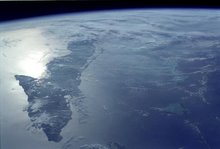Vice President Miguel Diaz-Canel, first in Cuba’s line of presidential succession, is presumably well known by people in the two provinces where he served as party chief: Santa Clara and Holguin. But he is not well known by most Cubans, and those I know have a favorable but not very detailed impression of him. His contact with Americans seems to have been minimal, and there is no sign of interest or involvement with issues involving the United States or foreign affairs in general.
Journalists’
profiles of him have produced lots of nuggets; see the Economist,
the Los
Angeles Times, Reuters,
AP,
the New
York Times, BBC
Mundo, Café
Fuerte, and the Herald. (Mentions of his liking for the Beatles – who
doesn’t? – remind me of the shortlived Yuri Andropov’s purported love for
jazz.)
Still, there’s no
definitive sense of the man, and no sense of where he stands on the big issues
facing Cuba today. In contrast, Cubans
did have a measure of the last next-generation figure who served in the top
leadership, Carlos Lage. His job was
economic policy, he was associated with the openings of the early 1990’s, and
he was known as someone who did not live high on the hog.
So there are many
blanks to be filled in about Diaz-Canel.
If the plan is to carry out a smooth transition to this presumptive
successor, one can guess that his profile will continue to increase in Cuba,
that he will be seen and heard from in a governing role.
If he does become
president in 2018 or sooner, one thing is absolutely clear. He has zero political capital as a historical
figure, military hero, or anti-Batista activist; he’s too young for all
that. His political base in the party,
government, and military is purely an inside game. As for public support, that will have to be
earned based on what he stands for today, and what government actually delivers
in the coming years.
(Cuban media photo.)








No comments:
Post a Comment